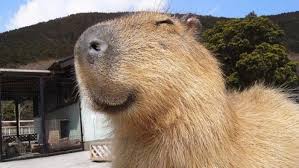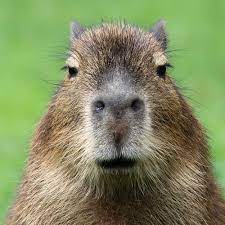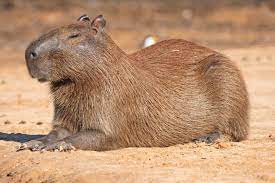
The capybara or greater capybara is a giant cavy rodent native to South America. It is the largest living rodent and a member of the genus Hydrochoerus. The only other extant member is the lesser capybara. Its close relatives include guinea pigs and rock cavies, and it is more distantly related to the agouti, the chinchilla, and the nutria. The capybara inhabits savannas and dense forests, and lives near bodies of water. It is a highly social species and can be found in groups as large as 100 individuals, but usually live in groups of 10–20 individuals. The capybara is hunted for its meat and hide and also for grease from its thick fatty skin. It is not considered a threatened species.
The capybara and the lesser capybara both belong to the subfamily Hydrochoerinae along with the rock cavies. The living capybaras and their extinct relatives were previously classified in their own family Hydrochoeridae. Since 2002, molecular phylogenetic studies have recognized a close relationship between Hydrochoerus and Kerodon, the rock cavies, supporting placement of both genera in a subfamily of Caviidae.
The capybara has a heavy, barrel-shaped body and short head, with reddish-brown fur on the upper part of its body that turns yellowish-brown underneath. Its sweat glands can be found in the surface of the hairy portions of its skin, an unusual trait among rodents. The animal lacks down hair, and its guard hair differs little from over hair.

